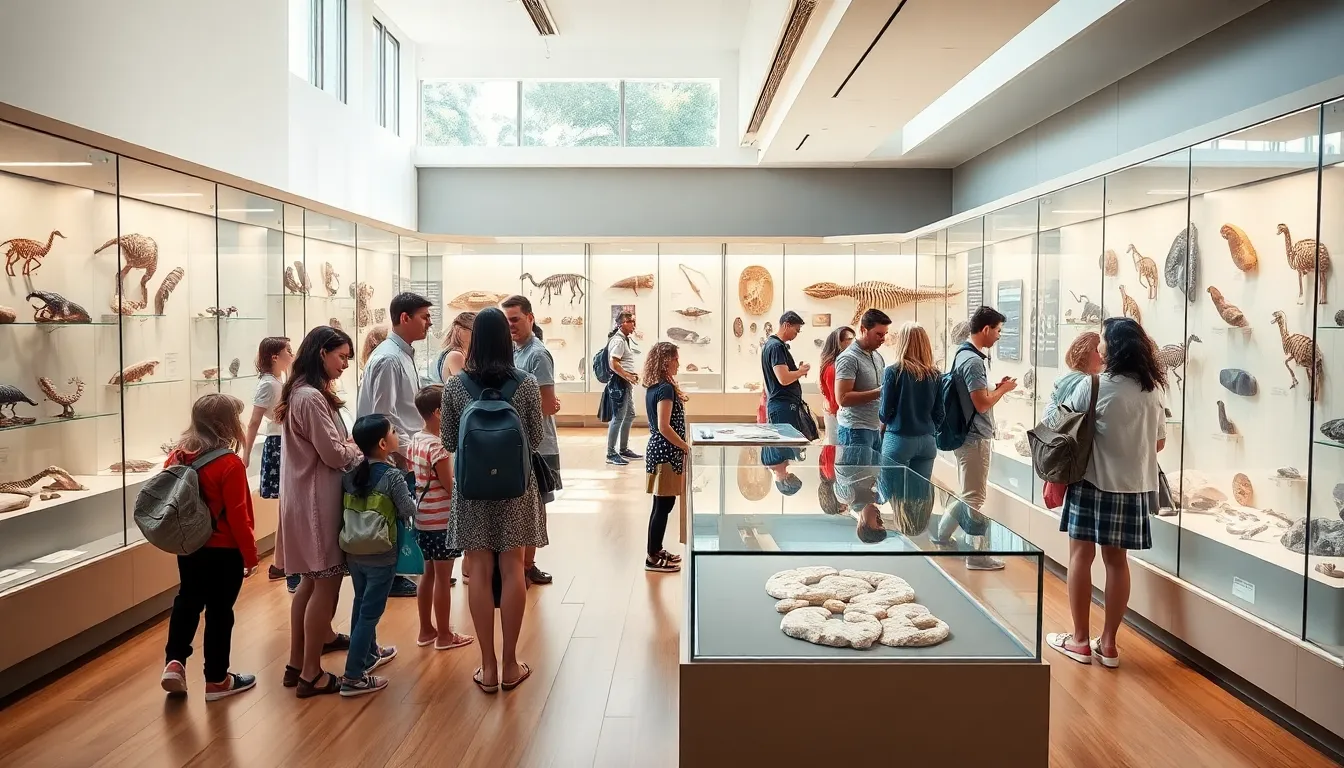Every now and then, something as seemingly mundane as a museum can redefine how we perceive science. Think about it: evolution isn’t just a concept confined to the textbooks anymore. A trip to a life science museum can take one on an adventure through time, discovering how life itself has morphed and adapted. With interactive exhibits and engaging displays, life science museums are more than just a collection of artifacts: they are gateways to understanding the complexity of life, from the tiniest microorganisms to the monumental beasts that once roamed our planet. So buckle up. It’s time to explore the vibrant evolution of life science museums, where each display tells a story and every visitor leaves a little more curious than when they entered.
Table of Contents
ToggleHistorical Background

The journey of life science museums began centuries ago, evolving hand in hand with scientific discovery. The origins can be traced back to the cabinets of curiosities in the Renaissance, where collectors displayed bizarre specimens and fascinating artifacts to reflect their wealth and intellect. Over the years, these collections transitioned into more organized museums, laying the groundwork for today’s life science museums.
During the 19th century, institutions like the American Museum of Natural History emerged. They aimed to not only display specimens but also educate the public about the complexities of the natural world. This era marked a significant shift in how society perceived science: it became more accessible and understood as an essential part of human existence. Life science museums began incorporating modern concepts of biology, evolution, and ecology, allowing visitors to connect with the subject matter on a deeper level.
The Role of Life Science Museums
Life science museums serve as important educational platforms, connecting the public with vital scientific concepts. They act as bridges between complex scientific information and everyday understanding, making learning engaging. These institutions aren’t merely about showcasing exhibits: they are about sparking curiosity and cultivating a love for science.
By providing a space where individuals of all ages can explore the wonders of life, these museums foster a sense of community. They create shared experiences that ignites a passion for discovery. From children fascinated by insects to adults enthused by genetics, life science museums know how to cater to a diverse audience. They play a critical role in education by offering programs, workshops, and guided tours that deepen comprehension and encourage critical thinking.
Key Features of Modern Life Science Museums
Modern life science museums come equipped with cutting-edge technology and interactive displays that captivate visitors’ attention. Virtual reality experiences, touchscreens with detailed information, and augmented reality enhance the educational journey, allowing visitors to engage with the content like never before.
Beyond the digital interactivity, these museums showcase live exhibits, such as aquariums and botanical gardens, bringing science to life. Hands-on labs help experiential learning, where visitors are encouraged to conduct experiments and discover processes themselves. This combination of interactive elements keeps the experience fresh and exciting.
Another notable feature is the integration of sustainability and conservation messages throughout exhibits. As awareness of environmental issues grows, museums emphasize the need for stewardship of our planet, making their role in promoting conservation increasingly vital.
Engagement and Educational Strategies
To keep pace with the evolving educational landscape, life science museums adopt innovative engagement strategies. Interactive storytelling is one such method, allowing visitors to immerse themselves in narratives that illustrate scientific concepts in relatable ways. This technique resonates deeply, encouraging emotional connections to the material.
Also, collaboration with schools and community programs enhances outreach efforts. Specialized programs are tailored to meet educational standards, thereby expanding impact on young minds. Field trips to life science museums provide students with hands-on learning experiences, igniting their imaginations and enthusiasm for the sciences.
Social media and digital platforms also play an important part in the engagement strategy, enlightening followers about exhibits, events, and initiatives. By fostering an online community, life science museums extend their reach beyond physical walls, opening doors to a global audience.
The Future of Life Science Museums
Looking ahead, life science museums are set to evolve further, adapting to discover new technologies and societal needs. The post-pandemic world emphasizes a need for health education, which museums can address through focused exhibits and public programming.
Also, eco-friendliness will continue to be a significant theme. Future museums may incorporate biophilic design principles, where indoor exhibits mimic natural environments, creating calming, immersive spaces.
Case Studies of Notable Life Science Museums
For instance, the California Academy of Sciences in San Francisco seamlessly integrates an aquarium, planetarium, and natural history museum into one vibrant institution. Through its myriad of interactive experiences and ongoing commitment to research, the Academy exemplifies the future direction of life science museums. Similarly, the Smithsonian National Museum of Natural History focuses on biodiversity and climate change, utilizing engaging exhibits to inform and inspire visitors on global sustainability.
Visitor Experiences and Community Impact
Visitor experiences at life science museums go far beyond mere observation: they create lasting impressions. By offering diverse programming, museums cater to different interests, from science enthusiasts to families looking for weekend activities. Everyone finds something to connect with, making the museum a community hub.
Besides, the impact on local communities is profound. Life science museums often partner with schools, offering free admission days, facilitating workshops, and hosting community events that promote literacy in science. Such initiatives break down barriers and ensure everyone can access this wealth of knowledge.
The lasting relationships formed through these interactions nurture an informed public that values science, further encouraging a culture of inquiry.


